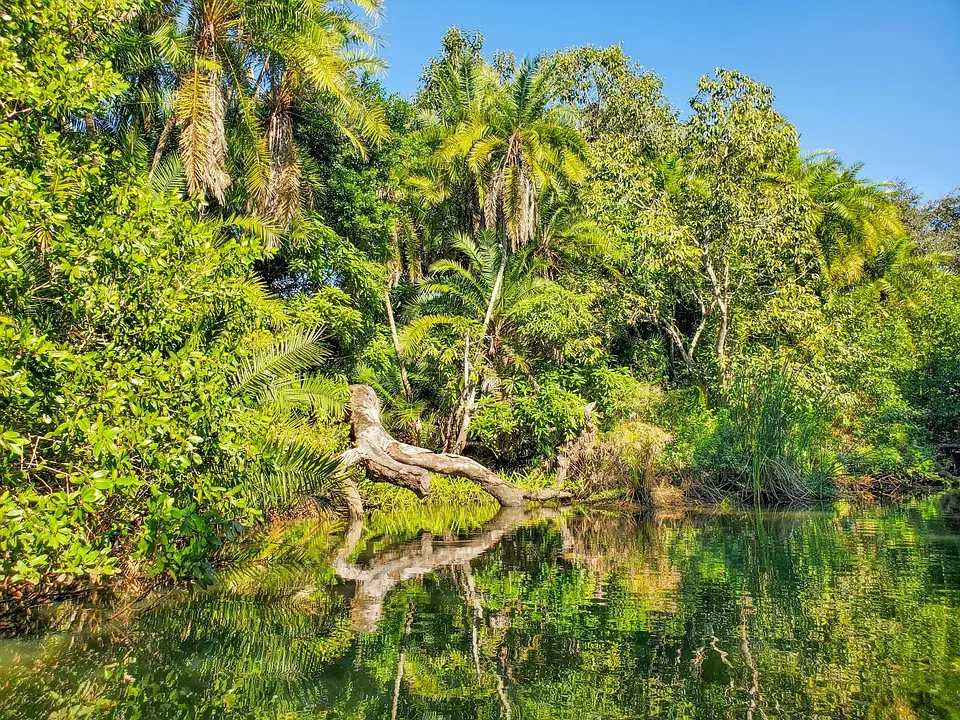Tarpon: Stages - Juvenile
Table of Contents
- Juvenile Tarpon: A Comprehensive Fishing Guide
- Overview of Juvenile Tarpon
- Juvenile Stages and Their Characteristics
- Habitat and Living Areas
- Temperament During the Juvenile Period
- Targeting Juvenile Tarpon
- Effective Retrieve Techniques
- Targeting Schooling Juvenile Tarpon
- Community and Expert Angler Tips
- Popular Search Terms Related to Juvenile Tarpon
Juvenile Tarpon: A Comprehensive Fishing Guide

Image Credit: michelle_raponi on Pixabay
Overview of Juvenile Tarpon
Juvenile tarpon represent an exciting stage in the development of one of the most coveted game fish. This guide provides an extensive look into the juvenile stages of tarpon, discussing their growth, habitat preferences, and behavioral changes during this period. Understanding these elements is crucial for targeting and harvesting juvenile tarpon effectively.
Juvenile Stages and Their Characteristics
-
Early Juvenile Stage:
- Description: Newly transitioning from fry, these young tarpon are small and highly vulnerable.
- Behavior: They tend to stick to shallow, sheltered waters with abundant cover such as vegetation and submerged structure. Their movements are cautious as they learn to avoid predators.
- Feeding: At this stage, feeding is opportunistic, and strikes are generally light and infrequent.
-
Mid Juvenile Stage:
- Description: As tarpon grow, they develop more robust bodies and begin to display increased activity.
- Behavior: They become more exploratory and start to form loose aggregations or schools. This is a period of rapid growth fueled by an increase in feeding activity.
- Feeding: Their strikes become more decisive and energetic as they target small baitfish and invertebrates.
-
Late Juvenile Stage:
- Description: Approaching the sub-adult phase, these tarpon are larger and more confident.
- Behavior: They often school more tightly and begin to venture into slightly deeper waters while still utilizing nearshore habitats for safety and feeding.
- Feeding: Their strikes are powerful and more selective, setting the stage for the aggressive behavior seen in adult tarpon.
Habitat and Living Areas
Juvenile tarpon are typically found in:
- Estuaries and River Mouths:
These environments provide a mix of fresh and saltwater along with abundant food resources, making them ideal nursery areas. - Mangrove-lined Inlets:
Dense vegetation offers protection from predators while providing a rich supply of small prey. - Shallow Coastal Waters:
Calm and nutrient-rich, these areas support the growth and schooling behavior of juvenile tarpon.
Temperament During the Juvenile Period
-
Early Stage:
Juvenile tarpon are cautious and tend to avoid open waters. Their strikes are tentative as they adapt to their environment. -
Mid Stage:
Increased boldness accompanies rapid growth. Tarpon at this stage begin to form loose schools and display more aggressive feeding behavior. -
Late Stage:
As they mature further, their temperament shifts toward a mix of caution and emerging aggression. They become more selective with their strikes, especially when schooling, and require a well-presented lure to trigger a response.
Targeting Juvenile Tarpon
Effective Retrieve Techniques
-
Stop-and-Go Retrieve:
- When to Use: Useful during the early stage when tarpon are more cautious.
- Method: Alternate between brief, steady retrieves and pauses. The pauses simulate injured or drifting prey, enticing a tentative strike.
-
Erratic Twitching:
- When to Use: Particularly effective if tarpon have become conditioned to regular motion.
- Method: Incorporate sudden twitches or jerks into your retrieve. This unpredictable action can provoke a stronger strike from more assertive juveniles.
Targeting Schooling Juvenile Tarpon
-
Group Presentation:
Cast into areas known for schooling behavior, such as estuaries or mangrove inlets. Use lures with high visibility and natural action to appeal to multiple fish at once. -
Subtle Approach:
When targeting schools, a gentle retrieve helps maintain the cohesion of the group. Avoid erratic movements that could scatter the school. -
Adjust for Conditions:
In low-light or murky conditions, consider using lures with brighter colors or added vibration to enhance attraction.
Community and Expert Angler Tips
- Learning Through Video:
Many experienced anglers share their techniques online. Watching detailed video tutorials can help refine your approach. For example, check out the video below:

Click the thumbnail above for a detailed guide on targeting Juvenile Tarpon.
For more tips, check out "fishing Juvenile Tarpon tips" on YouTube
Popular Search Terms Related to Juvenile Tarpon
| Search Term | Thumbnail | Link |
|---|---|---|
| Juvenile Tarpon Schooling Techniques | Watch Video | |
| Best Lures for Juvenile Tarpon | Watch Video | |
| Juvenile Tarpon Retrieve Methods | Watch Video | |
| Where to Find Juvenile Tarpon | Watch Video | |
| Juvenile Tarpon Fishing Tips | Watch Video |
Ask AI for More Info
Try our AI assistant for free—sign up to access this powerful feature.
👉 Sign Up to Ask AI